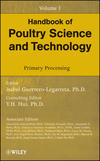The US Department of Agriculture's Food Safety and Inspection Service is releasing reports by third-party worker safety experts on swine and poultry evisceration line speed studies. In July 2022, FSIS announced that it was contracting with a team of third-party worker safety experts to conduct a study to measure the impact of increased poultry line speeds on worker safety. Subsequently, the agency expanded the contract to include a study on increased swine line speeds.
These experts collected data in 11 poultry establishments participating under line speed waivers and evaluated other data submitted monthly from all participating establishments; and then, for swine, conducted a separate study in six facilities.
With the publication of these reports, FSIS also is extending the current swine and poultry line speed waivers for companies that participated in these studies through May 15, 2025. The relevant establishments are required to continue to submit food safety and worker safety data to FSIS, as they have been throughout these trials.
While line speeds were not determined to be the leading factor in worker musculoskeletal disorder risk at these plants, the reports offer important insights into how line speeds and other factors may work together to contribute to employees’ overall risk. FSIS encourages all facilities to review these reports and their individual worker safety plans, regardless of their current operating line speed, to determine how they can protect their employees’ well-being and health.
In the meantime, the extension will allow incoming USDA leadership time to review these reports and consider relevant next steps, which may involve rulemaking, to act on the reports’ comprehensive findings. The poultry line speed waivers and the swine line speed time-limited trial were scheduled to expire Jan. 15, 2025.
For the studies, a team of third-party worker safety experts recorded and analyzed footage of poultry and swine plant workers, conducted interviews with workers and measured muscle activity, posture and repetition among other activities. The study team compared the risk of upper extremity pain and musculoskeletal injury for workers at facilities when operating at higher speeds versus at lower speeds.
While there are differences in the poultry and swine studies, both found that workers across all participating establishments generally reported high levels of upper extremity pain – a reflection of the physically demanding nature of meat and poultry processing work. The reports recommended steps establishments operating across line speed rates can take to reduce the risk of injury by mitigating the impact of the repetitive work, most notably by increasing staffing, which lowers the piece rate, which is a measure of work pace that accounts for job-specific line speed and staffing levels, per worker. Other strategies can include effective ergonomics plans, knife sharpening programs and effective medical management.
Specifically, the reports recommended that meat and poultry companies should consider developing an industrywide set of best practices that reflect input from collaboration between both workers and companies that include the following:
- Improve medical management programs that assesses ongoing pain as a metric of exposure to ergonomic risk;
- Promote an employee safety culture that encourages reporting of pain and discourages retaliation or consequences for reporting, medical management programs;
- Apply best practices to knife and scissor sharpening, maintenance and replacement, provision of new knives at shift start, routine replacement of knives multiple times during shifts, etc.;
- Fully implement industry-specific best practice guidelines that have been previously published by the Occupational Safety and Health Administration.
Source: USDA's FSIS
.jpg?1732220965)







